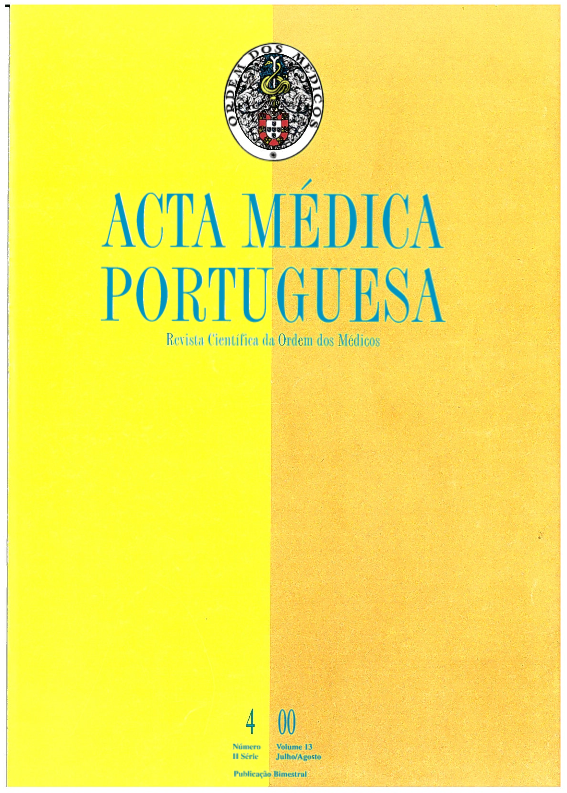Cervix uteri lesions and human papiloma virus infection (HPV): detection and characterization of DNA/HPV using PCR (polymerase chain reaction.
DOI:
https://doi.org/10.20344/amp.1788Abstract
The prevalence of human papillomavirus (HPV) genotypes was estimated by the polymerase chain reaction (PCR), in archival paraffin was embedded tissues. The case group consisted of 84 women aged 21-67 years (mean, 40 years) who were referred to the Department of Gynaecology (Oncology Centre, Coimbra) with citopathologically abnormal smears. This group was selected from a population of women who had undergone a screening programme (1990/94) in Central Region of Portugal. All these patients (n = 84) had a colposcopic directed cervical biopsy. HPV detection and typing was performed by the PCR method in the Department of Virology (National Health Care Institute, Lisbon). The prevalence of DNA/HPV found, concerning all epithelial cervical lesions studied and classified as squamous intra-epithelial lesions (SIL) and cervical cancer was 97.8%. On the basis of the data presented in this study, it was estimated that there was a statistically significant prevalence of low risk HPV types (HPV 6/11) in low grade SIL, 83.3%, and a statistically significant prevalence of high risk HPV types (HPV 16,18,31,33,51) in high grade SIL, 58.4%, as well as cervical cancer lesions in 100%. We conclude that there was a statistically significant difference between women with low and high grade SIL for HPV infection, with low and high risk HPV types, respectively. The risk factors for cervical cancer investigated (age at first sexual intercourse, multiple sexual partners, parity, use of oral contraceptives) were not associated to statistically significant differences concerning low grade SIL and high grade SIL. The clinical and therapeutic procedures were evaluated for the same five years (1990/94). It may be concluded that there would be no significant difference in clinical procedure for high grade lesions and cervical cancer, in which the treatment had been frequently radical (cone biopsies, simple or radical hysterectomy) and in which the HPV infection persisted frequently and was associated to high risk types (HPV 16 in 50% of these cases). On the other hand, it may be concluded that HPV detection in cervical biopsies, especially for low grade SIL lesions, which were evaluated in this study with a more conservative procedure (clinical evaluation only, punch biopsies, loop diathermy, CO2 laser vaporisation, cone biopsies), could identify women with high risk HPV types who might be at risk of developing dysplasia and cervical cancer.Downloads
Downloads
How to Cite
Issue
Section
License
All the articles published in the AMP are open access and comply with the requirements of funding agencies or academic institutions. The AMP is governed by the terms of the Creative Commons ‘Attribution – Non-Commercial Use - (CC-BY-NC)’ license, regarding the use by third parties.
It is the author’s responsibility to obtain approval for the reproduction of figures, tables, etc. from other publications.
Upon acceptance of an article for publication, the authors will be asked to complete the ICMJE “Copyright Liability and Copyright Sharing Statement “(http://www.actamedicaportuguesa.com/info/AMP-NormasPublicacao.pdf) and the “Declaration of Potential Conflicts of Interest” (http:// www.icmje.org/conflicts-of-interest). An e-mail will be sent to the corresponding author to acknowledge receipt of the manuscript.
After publication, the authors are authorised to make their articles available in repositories of their institutions of origin, as long as they always mention where they were published and according to the Creative Commons license.









